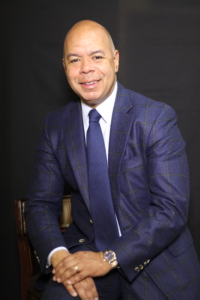(From the Editor: This article is last in a three part series of excerpts from a speech Kevin Warren delivered at the Council of Independent Colleges’ 2017 Presidents Institute on Jan. 4, 2017. The complete text is available on LinkedIn Pulse. Kevin is Chief Commercial Officer of Xerox).
By Kevin Warren

In my first two posts, we explored performance and behavior as key components of the “Success Triangle” model for positioning students’ success in the workplace. The third part of the triangle, Competency Development, is about the commitment to growing your talent, with intellectual curiosity and the belief that learning is infinite. This is the part of the triangle where today, students have the advantage over the workforce. They are living the learning mindset – ready to soak up all the experience, knowledge and skills you are offering. What I need to know is that they are prepared to stay in this mindset, for a lifetime. And that comes down to building their brand as a life-long learner.
The world we live in is characterized by change and unpredictability. It’s what I call permanent whitewater – not one transformative action or event, it’s constant. And just like a corporate brand, students need to understand that even after graduation, they should be constantly looking for new ways to innovate and evolve.
But like many of the skills we talked about in the behavior section, this thirst for learning and gravitas to adapt to the unthinkable, doesn’t necessarily jump out on a resume. So how do you help students communicate the critical brand attributes that aren’t part of their major, minor or other activities?
I can’t say I’ve hit upon the answer, but there’s interesting work-in-progress on the subject at the Education Design Lab. The Lab is working with universities like Georgetown and George Mason to prototype competency-based digital badges, as proof that the recipient has demonstrated the skills most important to employers.
To receive a badge, students go through a process built on workshops with peers, developmental assessments, conversations with mentors, and self-reflection.
Once earned, the digital badges are hosted online so potential employers can click on it to get access to the body of work the student completed to earn the badge, include assessment details.
What I like about the digital badging program is that the students volunteer and commit to some rigor – demonstrating, just by participating, that they have the appetite for evolved learning. I also like that it’s digital – because it fits in to the best competency-based hiring mechanism we have today – LinkedIn.
Mindset over major has proved to be critical to survival. Research says only 16% of people are actually “what they intended to be when they grew up” – proving that no industry, business, or career path is immune to the disruption that is happening around us.
Jobs, careers…they don’t have a beginning and an end…they are evolutionary. The college experience needs to model that, adapting to the fact that the lifespan of what you learn technically is often very short.
Consider innovative ways to help students master each part of the success triangle, we talked about the following:
- Reframing the value of a degree and removing barriers to entry by connecting the education and business worlds early on to create motivational, financial, and diverse opportunities within the real-world network, like at Cristo Rey.
- Leveraging the “safe space” of the college environment to provide a set of non-academic experiences that allow students to practice cultural sensitivity, global awareness and interpersonal skills.
- And finally, helping students stand out to employers with a distinctive brand that says, “I’m ready, and I’m going to stay ready” with a commitment to constant evolution of myself, my skills and my perspective.
This is the set of opportunities educators can provide to help create the people we want in our seats in Corporate America. It’s the gift education continues to give to the workplace…but it’s also the gift given to students. And then, just like in the workplace, it’s up to them to have the discipline to take advantage of it. For students and employees alike – success is a matter of choice, not a matter of chance. It’s in reach for everyone – you just have to be prepared to grab it.
I hope this blog series inspires new ideas for that preparation and tighter connectivity between higher education institutions and the professional job market. Being articulate about our collective needs – current and future – better positions you to inspire students to dream more, learn more, do more, and become great workers, and contributing global citizens.



